Words Justin Croft Photographs Justin Croft
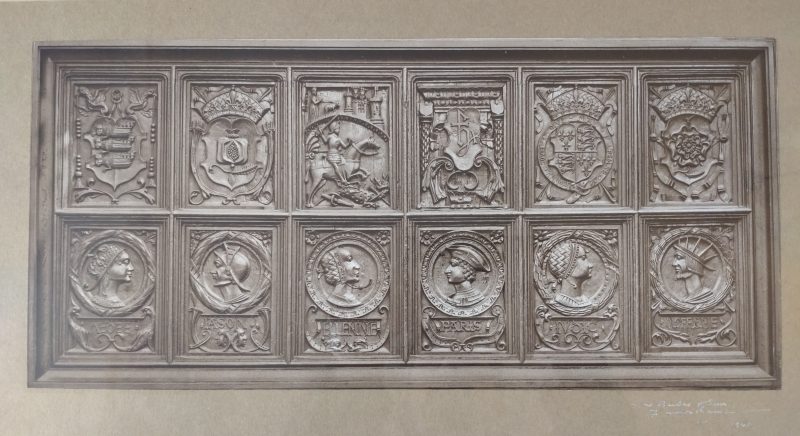
Henry Hatch’s panel. Photograph from 1941, capturing all the details of this hard-to-photograph artefact
The panel was made for Hatch’s house just across the square at 12 Market Place but has long been kept in the Guildhall. It’s found high up above the doorway and is often missed by visitors.
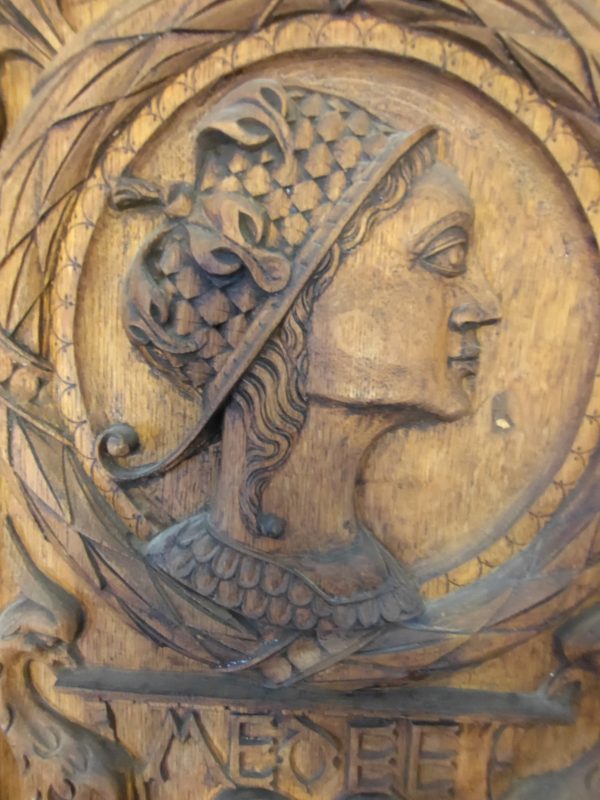
A carved detail from Henry Hatch’s panel
As far as we can tell, not much has been written about it, but it caught the eye of the historian Christopher Hussey who described it in Country Life back in 1966 as:
‘A series of 12 carved panels believed to have formed an overmantel, which is now in the Guildhall. The upper six (left to right) depict conventionally the Cinque Ports’ arms, the Pomegranate, St. George and the Dragon, Hatch’s merchant’s mark, the Garter, and the Tudor Rose. The pomegranate shows it was carved during the marriage of Henry VIII to Catharine of Aragon. But the lower medallions, Mr Wilson points out in Faversham, the King’s Port, all represent couples noted for their marital infidelities: Medea and Jason, Helen and Paris, Judith and Holofernes. If the allusion, as seems inescapable, was to Henry VIII’s pursuit of Anne Boleyn, the date of the carving would be between 1527 when the affair began, and the divorce of Catharine (and Hatch’s death) in 1533’.
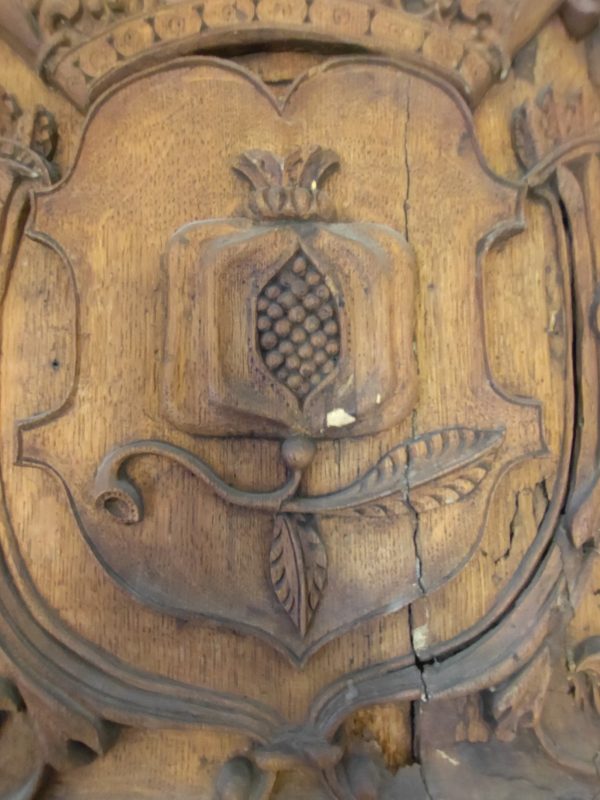
Catharine of Aragon’s pomegranate emblem
The pomegranate beneath a crown was indeed the emblem of Catharine of Aragon, appearing in many carvings and images associated with the Tudor royal palaces, but also a universal symbol fertility. Here, its ripe form, split wide open to reveal a multitude of seeds within, is used in bitter irony and (for us) a stark reminder of the perils of childbirth in earlier times. Catharine had been pregnant six times over nine years but only one child, Mary, had survived infancy. On the far-right of the panel Henry VIII is represented by a Tudor rose and crown.
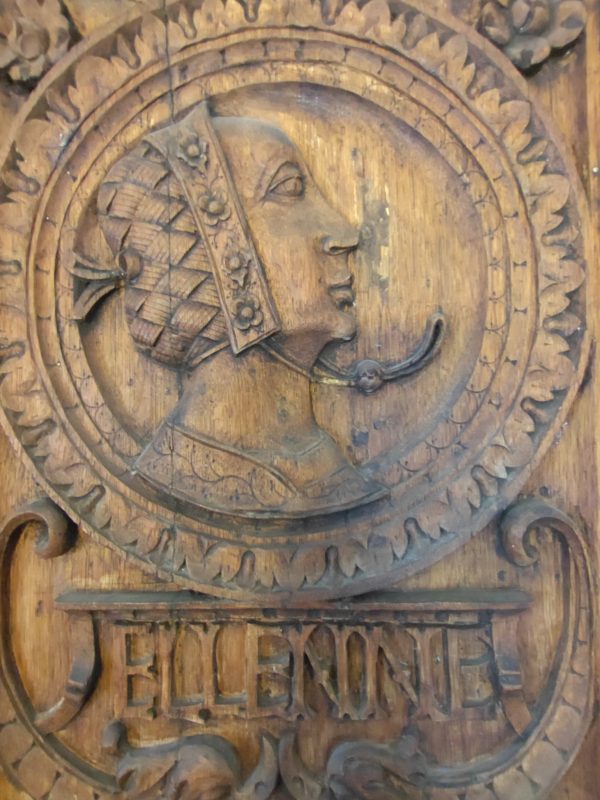
Helen of Troy
The portraits of the unfaithful lovers below are superb — strong faces of both the women and men, with sharp beady eyes. Their presence in pairs arranged along the lower frieze below the emblems suggests these are not accidental in the least, but quite deliberately placed as a provocative commentary on Henry’s dissolving marriage.
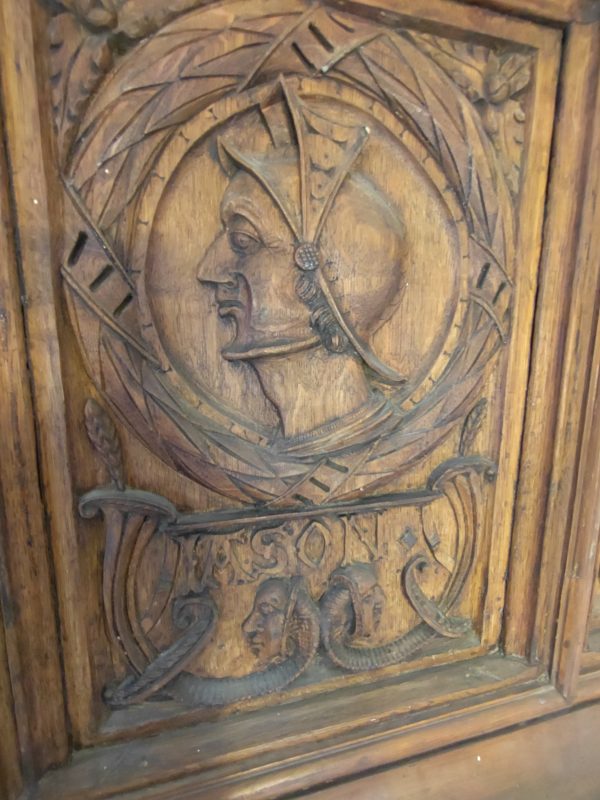
Jason
In Greek mythology, for example, Medea had helped Jason capture the Golden Fleece, but in the version of their story told by Euripides, Jason abandons her in his pursuit of a new lover, Creusa. Jason tries to dissolve his marriage to Medea on legal grounds with hideous consequences. In revenge, Medea murders their sons and Jason’s new bride with a poisoned crown and robes so that Jason would forever be without an heir. Our Henry Hatch and whoever made these carvings knew exactly what they were doing by putting them into Faversham panel. It seems a bold statement in an era where treasonous thoughts were so easily punishable by death.
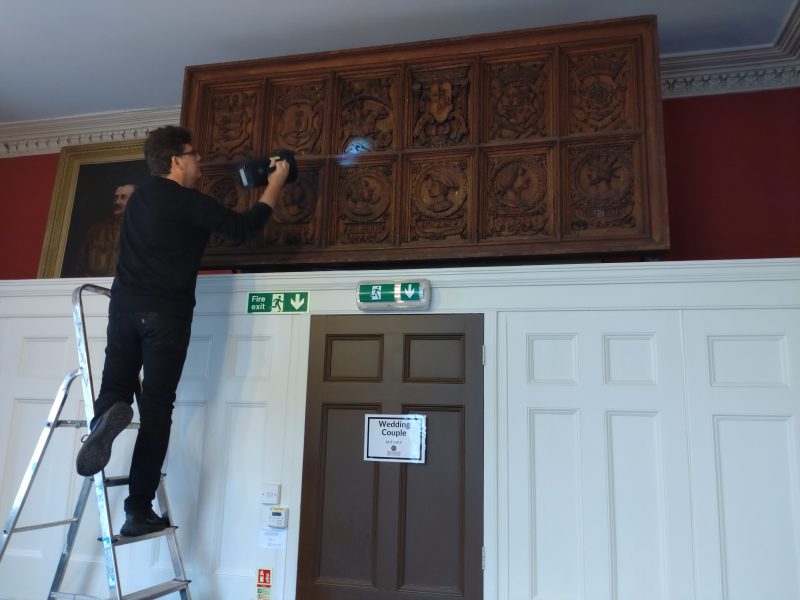
Ultra-violet. Yannick Chastang examines the panel
We wanted to know more about the timber of the panel and contacted the remarkable Yannick Chastang, a longtime Faversham resident and world-renowned expert and restorer of historic furniture. We were fortunate he was in town – he’s frequently in demand as an expert both in Britain and abroad, counting several important British country houses and museums, as well as the Getty Museum in Los Angeles and the Louvre in Paris among his clients. Clambering up to get a close look at the woodwork Yannick confirmed that the Faversham panel is very good indeed. The wood itself is of especially high quality. It’s oak, but Yannick soon overturned our preconceptions of the panel as a prime example of work in English oak. Looking carefully at the wood grain and explaining the patterns of the medullary rays (we learned more about the growth of trees and timber in five minutes than we ever had before) Yannick says this is almost certainly continental oak, grown in the drier, colder atmosphere of Northern Europe (perhaps the Baltic) producing a far superior carving timber to coarse, quicker growing English oak. Henry Hatch was certainly pursuing the highest quality when he commissioned this piece.
Casting an ultraviolet light over the panel, Yannick also suggests that it was very likely to have been painted in the style typical of the Tudor period. So, while we now appreciate the rich and chocolatey patina of the 500-year old wood, Henry Hatch probably had it overpainted in bright colours. Yannick found very few traces of this paint, and notes that it has subsequently been very carefully stripped but he did pick up traces of gesso – the smooth paste used by panel and frame makers to make a smooth surface for painting.
We also wanted to get an opinion of the quality of the carving. Christopher Hussey had clearly been impressed by it:
‘The accomplishment and character of the work supports the view of its being by an itinerant Flemish (or possibly northern French) carver.’
Yannick agrees but tells us that it would be almost impossible to prove the origin of the maker, especially in a region like Kent where skills and craftspeople skipped to- and- fro across the Channel so fluidly. There would certainly be Continental carvers to call on, but also English craftsmen who shared their expertise. Yannick does however praise the artistry of this particular carver. The panel was made by someone with a real understanding of carving in relief from the classical medallions highly prized by sixteenth-century collectors and artists.
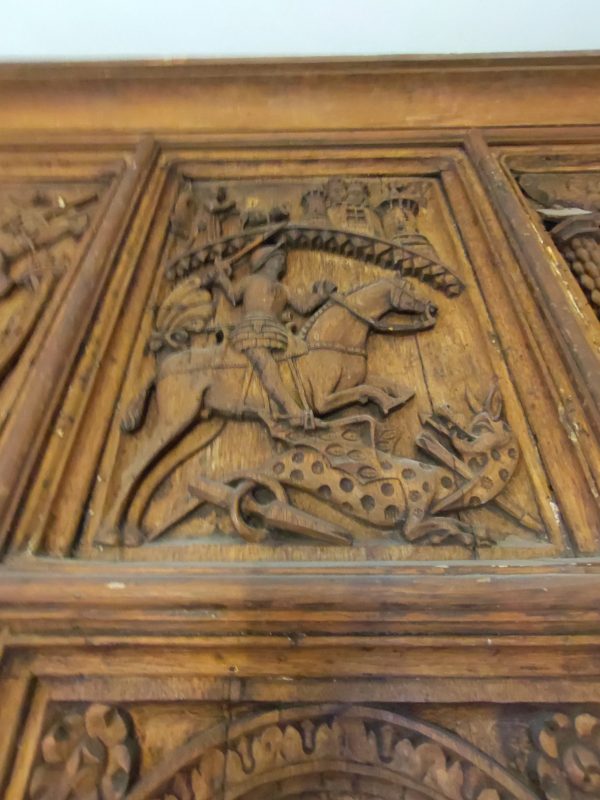
George and the Dragon
The fascinating hour spent with Yannick Chastang discussing this Henry Hatch’s panel flew by and left us far better informed. But it also left us even more intrigued about why this panel was made, given its exceptional quality. From a twenty first century perspective it seems a bizarre and potentially risky project. We can appreciate the quality but would we want it in our houses? And if we were Henry Hatch, who would we want to see this, and what lesson would we expect them to learn from it? There’s so much more to learn about the minds of our Tudor forebears and the Guildhall panel deserves to better understood.
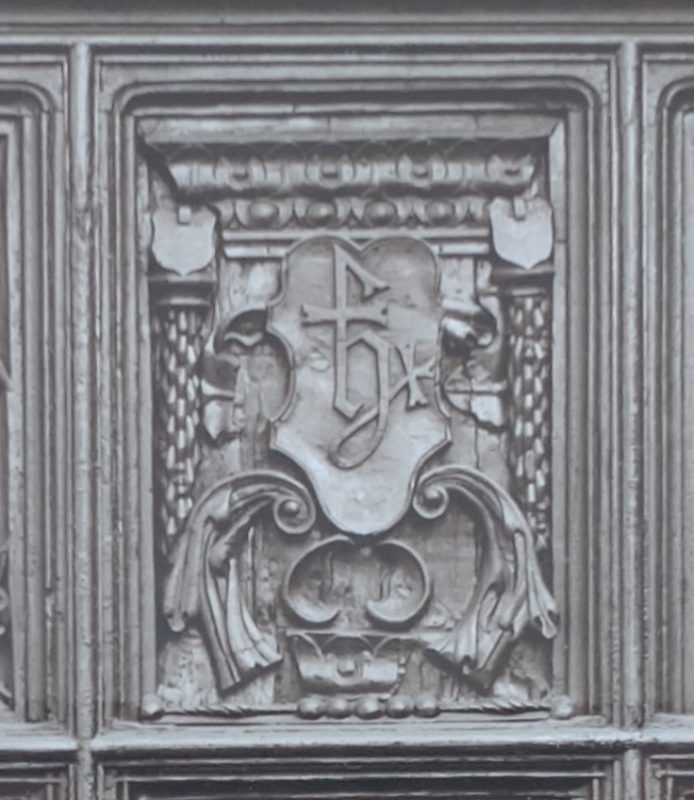
Henry Hatch’s merchant’s mark